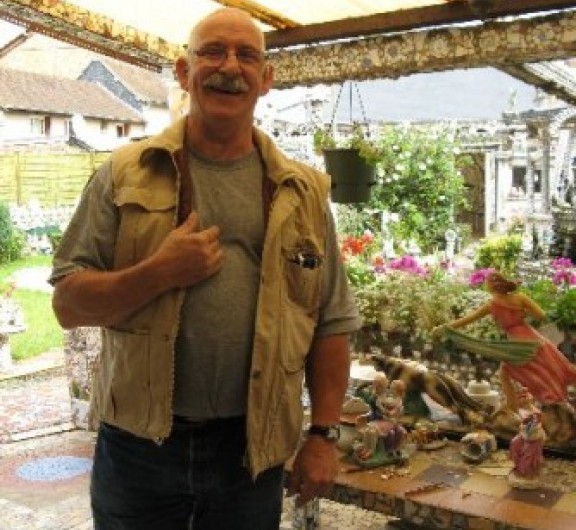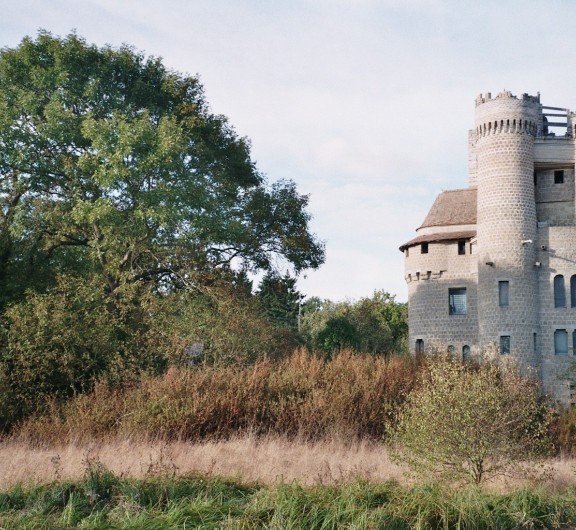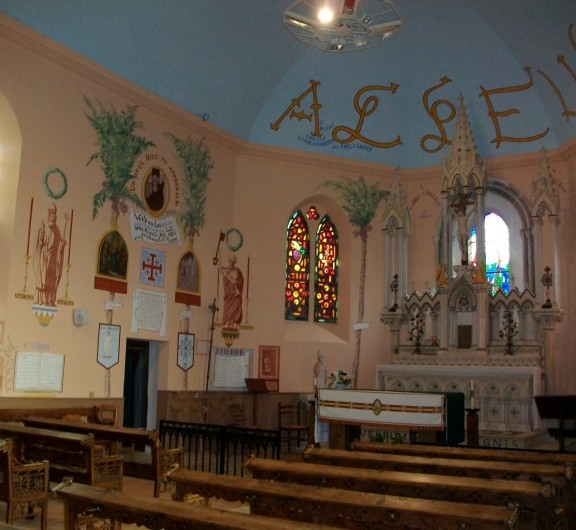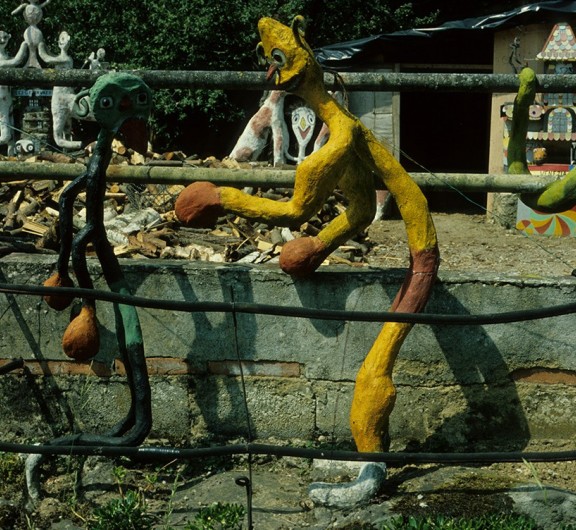Sistine ChapelIrial Vets (1908-2001)
About the Artist/Site
As the oldest of five children, Vets followed the vocation of his father, a cobbler and shoe repair man. He worked with his father from age 12 to age 20; later he was drafted into the Belfort regiment, and after his return, he opened his own shoe repair business in Argenteuil, which he had for twenty years. But Vets had also always had a love of painting, and would offer to paint portraits in oil for his clients, or he would paint little motifs on the shoe soles that he repaired. Later, he also made publicity posters for the local movies, and several years later purchased a restaurant in Trouville, running that for some time.
In 1968 Vets saw an advertisement for the sale of a rundown church near the town of Broglie; after visiting it, he purchased it, despite the fact that the roof had caved in and the vaults were in terrible shape, because he had always wanted to try to faithfully reproduce Michelangelo’s painting on the ceiling of the Sistine Chapel in Rome. ”It was a divine inspiration,” he was quoted as saying. So although the proportions of the two buildings are not equivalent, Vets began planning his painting project. He started by viewing reproductions of the building—including one in the magazine Paris Match, which fortuitously had been recently published—but soon realized that he would need to travel to Italy to see the work in person. He made the trip to the Vatican several times.
Between 1968 and 1972 Vets worked on his Sistine Chapel; all accounts indicate that despite the modifications necessary to accommodate the different size and proportions, as well as Vets’ lack of academic art training, his reproduction was very impressive. Following the completion of his masterpiece, Vets built a tomb for himself that included six coffers honoring his life as a lover of the arts and ornamented with a funeral wreath inscribed “à moi-même [to myself].” He also created a self-portrait of himself, as if in meditation, arms crossed, which he installed outside of the Chapel. He joked that he was trying to be the reincarnation of Michelangelo himself. “I began my life like Urban IV, an apprentice cobbler, and I will finish it as a pope, in my little Vatican,” he declared.
During his lifetime Vets and his partner would open the chapel to the public on Sundays to view the ceiling, yet after his death it was closed, although it had been hoped that the grandson who inherited it would continue to allow visitation. Too, although Vets had asked to be buried within the tomb that he spent years constructing, his wishes were not respected. Visitors to the site in 2006 indicated that although the exterior sculptures remained extant, the inside of the chapel ceiling had been whitewashed, no doubt to facilitate the sale of the building, which took place in 2007. So although the building is extant, the main focus of Vets’ labors, the ceiling, is not.
~Jo Farb Hernández, 2014
Contributors
Map & Site Information
La Trinité-de-Réville, Upper Normandy, 27270
fr
Latitude/Longitude: 48.97012 / 0.513672
Nearby Environments









Post your comment
Comments
No one has commented on this page yet.